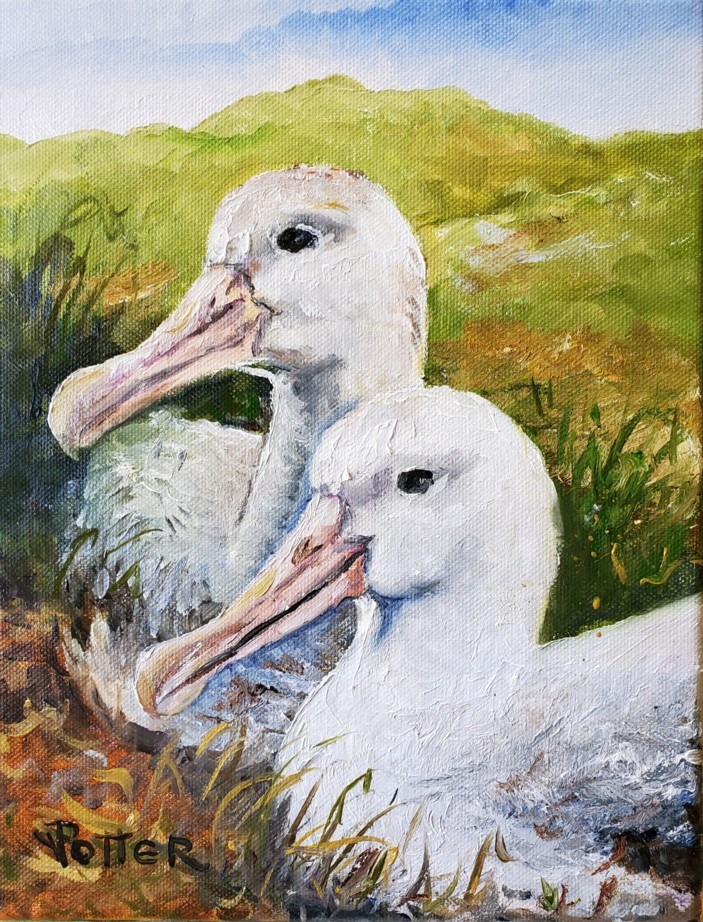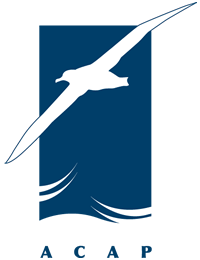
A Tristan Albatross (a species considered in the publication) pair on Gough Island by ABUN artist Virginia Potter Vredeveld for World Albatross Day, 19 June 2020, after a photograph by Michelle Risi
James Bell (Centre for Environment, Fisheries, and Aquaculture Science, Lowestoft, UK) and colleagues have published open access in the journal Biological Conservation on assessing incidental mortality risk for four procellariiform species in the South Atlantic.
The paper’s abstract follows:
“Incidental mortality (bycatch) of seabirds in pelagic longline fisheries remains a major threat to many populations. The design and implementation of technical innovations aimed at reducing seabird bycatch rates have long been a focus of research. However, it has historically been difficult to extrapolate the efficacy of a particular mitigation measure to the scale of seabird populations or oceanic basins. Here, we develop an ecological risk assessment for five populations of threatened albatross and petrel species that forage in the south Atlantic Ocean. Since seabird bycatch rates are likely under-reported to fisheries regulatory bodies, we adopted a risk-based approach to predict differences in bycatch rates between different combinations and specifications of mitigation measures, comparing those currently specified by the International Commission for the Conservation of Atlantic Tunas (ICCAT) against best practice guidelines recommended by the Seabird Bycatch Working Group of the Agreement on the Conservation of Albatrosses and Petrels (ACAP). We conclude that updating existing mitigation measure specifications for pelagic longlining in the South Atlantic to reflect current best practice guidelines would potentially reduce seabird mortality by 41–86 %, compared to use of any two of the three options by vessels. Simultaneous application of all three mitigation measures recommended as current ACAP best practice was predicted to reduce seabird mortality by 72–93 % and therefore should be considered by ICCAT as the most appropriate management measure for seabirds until further data are available to undertake more rigorous analyses.”
With thanks to Richard Phillips.
Reference:
Bell, J.B., Fischer, J.H., Carneiro, A.P.B., Griffiths, S., Bielli, A., Jiménez, S., Oppel, S., Phillips, R.A., Wade, H.M., Yates, O. & Reeves, S.A. 2025. Evaluating the effectiveness of seabird bycatch mitigation measures for pelagic longlines in the South Atlantic. Biological Conservation 302. 110981.
John Cooper, Emeritus Information Officer, Agreement on the Conservation of Albatrosses and Petrels, 21 January 2025

 English
English  Français
Français  Español
Español